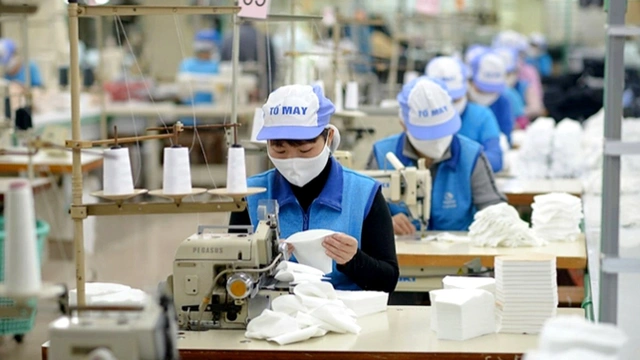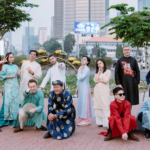Manpower: A Key Advantage for Vietnam’s Textile and Garment Industry
A recent report by the International Labor Organization (ILO) highlights Vietnam’s potential to capitalize on the strong growth of the textile and garment market in the coming decades. While the country’s low-cost labor advantage is diminishing, improved competitiveness and transport infrastructure will enable domestic manufacturers to manage and reduce production costs effectively.
Vietnam’s demographic dividend, with its large and relatively young population, provides a significant boost to the industry. This, coupled with enhancements in vocational education and skill development, presents opportunities to enhance labor productivity and strengthen the sector’s competitiveness.
The sector’s workforce has grown significantly from 1.8 million workers in 2012 to approximately 3.4 million in 2023, with the majority in garment manufacturing. However, the ILO report also points out the challenge of an aging workforce, making it harder for businesses to recruit younger talent.
While the occupational structure has remained stable, with medium-skilled jobs dominating the sector, there has been a noticeable shift within this category. Jobs in “craft and related trades” are transitioning to “assemblers and machine operators,” reflecting the increasing automation and job restructuring within larger enterprises. As a result, the demand for semi-skilled manual labor is decreasing, while the need for workers who can operate and maintain machinery is on the rise.
To keep up with the rapid advancements in technology, automation, and artificial intelligence, a comprehensive effort to enhance the workforce’s quality is essential. This includes addressing the changing nature of production processes and the labor market within the industry.
 |
| Vietnam’s textile and garment industry employs 3.4 million workers and is known for its high-quality products. |
Strategies to Enhance Workforce Quality
Vietnam has a robust educational infrastructure, with 577 public institutions offering textile and garment-related training programs at various levels. Additionally, about 38 universities provide textile-related majors, although enrollment remains competitive. Initiatives like the Better Work Vietnam Program and collaborations with global brands also contribute to regular training sessions for employees, covering areas such as compliance, soft skills, and supply chain management.
Despite these efforts, the number of trained workers in the industry is limited. From 2015 to 2023 (excluding pandemic years), the sector added over 200,000 workers annually, but trained workers comprised only 40% of the total workforce. To address this, many businesses have implemented on-the-job training tailored to industry-specific skills.
The ILO recommends that the government and enterprises improve training effectiveness and implement supportive policies, especially in developing skills crucial for Vietnam’s textile and garment value chain upgrade. Key measures suggested include boosting productivity and wages, enhancing the industry’s image to attract talent, strengthening soft skills training, promoting quality assessment for training programs, increasing industry involvement in skill development, and improving budget allocation based on industry needs.
By implementing these strategies, Vietnam can ensure that its textile and garment sector remains competitive in the global market through a skilled and adaptable workforce.
The Allure of Vietnamese Tet: Foreigners Captivated by Lucky Money, ‘Banh Chung,’ and More
The vibrant peach blossoms and kumquat trees, heavy with ripe fruit, set the stage for Vietnam’s Lunar New Year, or Tet. The traditional customs of wrapping ‘banh chung’ (square sticky rice cakes) and exchanging red envelopes filled with lucky money have become beloved rituals for foreigners, offering a unique glimpse into Vietnamese culture and a chance to connect with the local people.
The Belgian Monarchs’ Majestic Experience at the Thang Long Imperial Citadel
THE HANOI TIMES — King Philippe and Queen Mathilde of Belgium were captivated by the cultural and historical significance of Hanoi’s Thang Long Imperial Citadel during their tour of the UNESCO World Heritage Site as part of their official visit to Vietnam. King Philippe and Queen Mathilde of Belgium, accompanied by Vietnamese President Luong Cuong […]
The Cycling City: Preserving History and Dreams on Two Wheels
Daniel Stork, the Dutch Consul General in Ho Chi Minh City, has a deep passion for fostering cultural ties between Vietnam and the Netherlands. He hopes to see the southern Vietnamese city preserve its rich heritage and envisions a future where the streets are filled with bicycles, a dream reflecting his desire for a greener and more sustainable urban environment.








